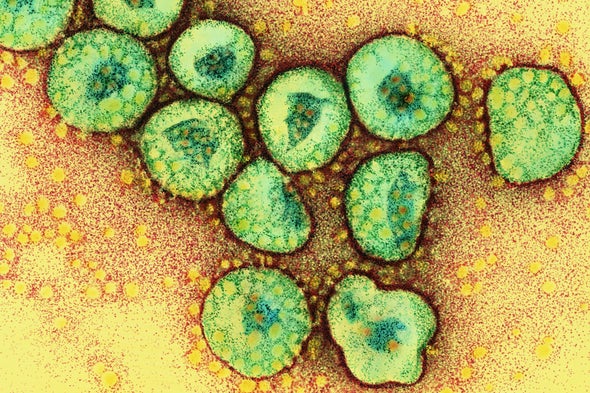Get the latest international news and world events from around the world.

Microbes of the Universe — Could our Solar System be rife with Pathogens?
In a recent study of the upper atmosphere of Venus, finding the chemical fingerprint of phosphine has led to speculation that it may be tied to airborne life high in the clouds of our sister planet [1]. We harbour similar suspicion of microbial life on Mars [2], Saturn’s moon Enceledus [3], and Europa, the icy Galilean of the Jovian system [4]. The dwarf planet Ceres of the asteroid belt could be added to that list also, with recent evidence of oceanic water [5], while more exotic variations of life may exist on Titan, which is known to be teeming with organic materials [6]. Should we be more wary of our Solar System as an environment to explore, and the potential of pathogens we may encounter?
If one rewinds 500 years, to when exploration of new worlds involved sailing the oceans, the discovery of the Americas introduced viruses which decimated the native population at that time [7]. That in itself was far from a unique event in history, of course. There have been many occurrences throughout history where travel between distant lands has resulted in the introduction of devastating plagues to one population or the other — not least the Black Death, which arrived in Europe from commercial travel with Asia in the 1300s [8]. Meanwhile, 2020 has reminded us how a novel virus can prove virtually unstoppable from spreading worldwide in a matter of months and reaching pandemic level, once introduced to our now interconnected world [9].
Indeed when the first astronauts returned from the Moon in the 60s, they had to undergo weeks of quarantine as a precaution against introducing a lunar pathogen to Earth [10]. We now know the Moon to be a sterile world, but this should not give us a false sense of security when visiting and returning from other worlds, which are far more likely to harbour microbial life. It is quite plausible to consider that any microbes which have evolved to survive in the harsh environments on other worlds could multiply out of control if introduced to a more fertile environment on Earth. The likelihood of any such foreign microbes being capable of becoming infectious pathogens to our species is difficult to measure, but one could still cause problems regardless, by undermining Earth’s ecosystem in competing with native microbial life as a runaway invasive species.
Fortunately, due to the vast distances involved in inter-planetary travel, returning astronauts would likely show symptoms of infection from any dangerous pathogen long before reaching home, as such a journey would be expected to take many months, even with more advanced propulsion technology than we use in space travel today. That is not to say they could not inadvertently return with microbial life on board — or even on the exterior of craft: Earth’s tardigrades, for example, have proven quite durable in journeys into outer space [11].
OpenAI’s GPT-3 Wrote This Short Film—Even the Twist at the End
Now there’s another feat to add to GPT-3’s list: it wrote a screenplay.
It’s short, and weird, and honestly not that good. But… it’s also not all that bad, especially given that it was written by a machine.
The three-and-half-minute short film shows a man knocking on a woman’s door and sharing a story about an accident he was in. It’s hard to tell where the storyline is going, but surprises viewers with what could be considered a twist ending.


Space Force activates Space Operations Command in Colorado
Oct. 22 (UPI) — Chief of Space Operations Gen. Jay Raymond established Space Operations Command during an activation ceremony at Peterson Air Force Base in Colorado this week.
According to the Space Force, Lt. Gen. Stephen Whiting will serve as commander of the new unit, which is mostly formed from former Air Force units 14th Air Force and Air Force Space Command.
At the ceremony Wednesday, Raymond and Whiting both talked about the decades of work that made the new organization possible, and the role of that history in preparing warfighters for space.

Elon Musk’s Neuralink is neuroscience theater
Rock-climb without fear. Play a symphony in your head. See radar with superhuman vision. Discover the nature of consciousness. Cure blindness, paralysis, deafness, and mental illness. Those are just a few of the applications that Elon Musk and employees at his four-year-old neuroscience company Neuralink believe electronic brain-computer interfaces will one day bring about.
None of these advances are close at hand, and some are unlikely to ever come about. But in a “product update” streamed over YouTube on Friday, Musk, also the founder of SpaceX and Tesla Motors, joined staffers wearing black masks to discuss the company’s work toward an affordable, reliable brain implant that Musk believes billions of consumers will clamor for in the future.
“In a lot of ways,” Musk said, “It’s kind of like a Fitbit in your skull, with tiny wires.”

Optical Computing: Solving Problems at the Speed of Light
Optical computing, which uses photons instead of electrons, has been one of the great promises of this field for decades.
According to Moore’s law —actually more like a forecast, formulated in 1965 by Intel co-founder Gordon Moore— the number of transistors in a microprocessor doubles about every two years, boosting the power of the chips without increasing their energy consumption. For half a century, Moore’s prescient vision has presided over the spectacular progress made in the world of computing. However, by 2015, the engineer himself predicted that we are reaching a saturation point in current technology. Today, quantum computing holds out hope for a new technological leap, but there is another option on which many are pinning their hopes: optical computing, which replaces electronics (electrons) with light (photons).
The end of Moore’s law is a natural consequence of physics: to pack more transistors into the same space they have to be shrunk down, which increases their speed while simultaneously reducing their energy consumption. The miniaturisation of silicon transistors has succeeded in breaking the 7-nanometre barrier, which used to be considered the limit, but this reduction cannot continue indefinitely. And although more powerful systems can always be obtained by increasing the number of transistors, in doing so the processing speed will decrease and the heat of the chips will rise.
The hybridization of electronics and optics
Hence the promise of optical computing: photons move at the speed of light, faster than electrons in a wire. Optical technology is also not a newcomer to our lives: the vast global traffic on the information highways today travels on fibre optic channels, and for years we have used optical readers to burn and read our CDs, DVDs and Blu-Ray discs. However, in the guts of our systems, the photons coming through the fibre optic cable must be converted into electrons in the microchips, and in turn these electrons must be converted to photons in the optical readers, slowing down the process.


China Just Built a 250-Acre Solar Farm Shaped Like a Giant Panda
Well, at least they’re having fun with it.
Most sun oriented homesteads adjust their sunlight based exhibits in lines and segments to shape a matrix.
Another sun based force plant in Datong, China, be that as it may, chose to have some good times with its structure. China Dealers New Vitality Gathering, one of the nation’s biggest clean vitality administrators, fabricated a 248-section of land sun powered ranch looking like a mammoth panda.
